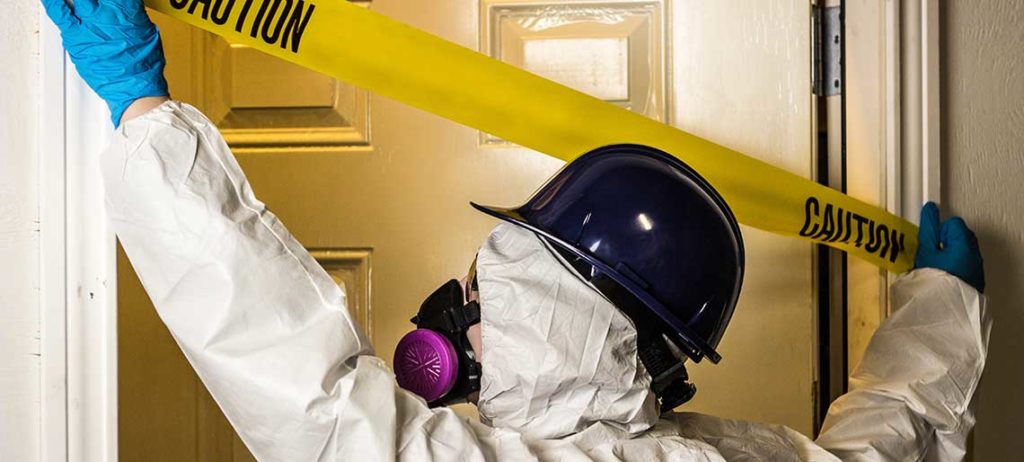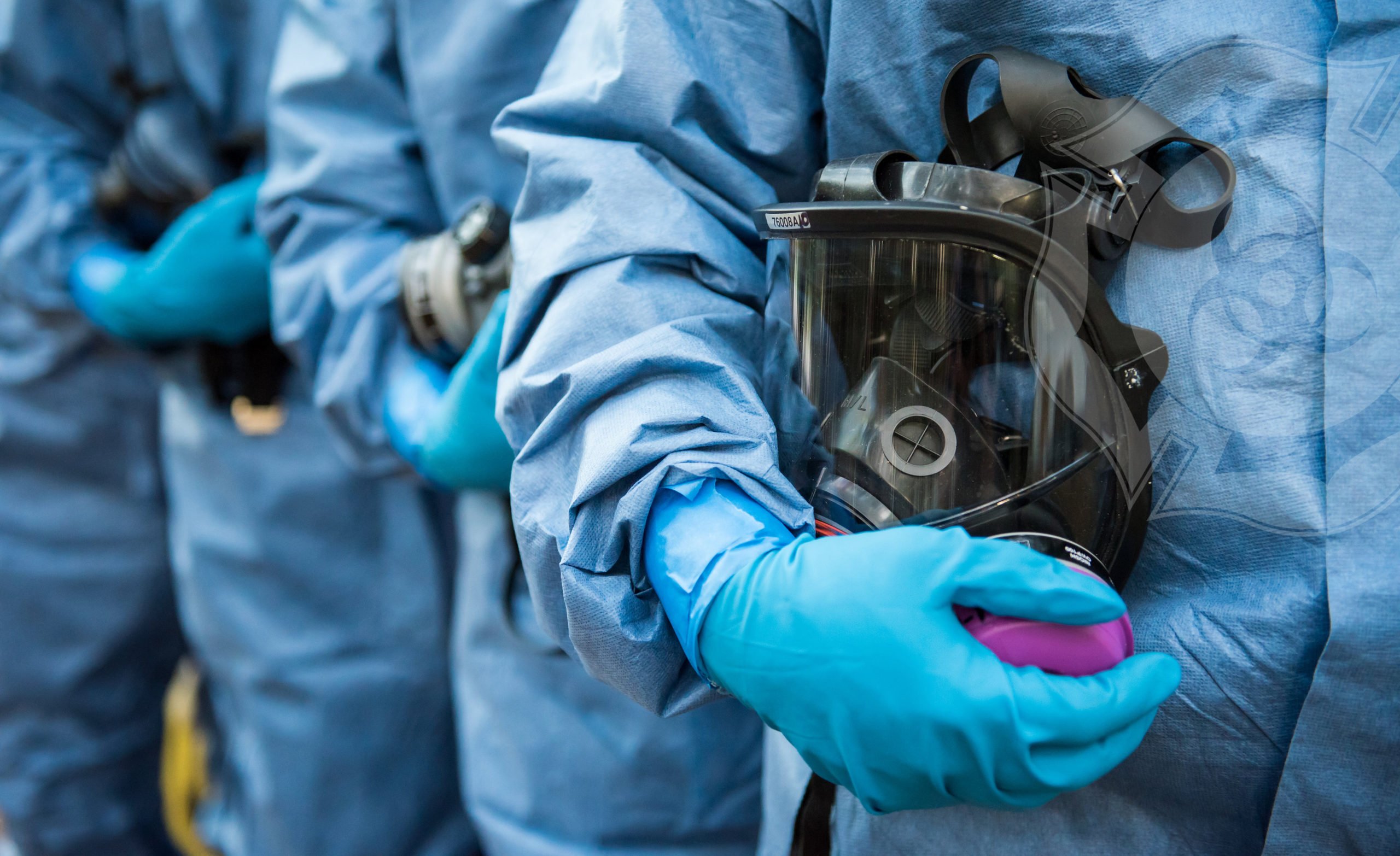Biohazard Removal: Safe Handling and Disposal of Hazardous Products
Biohazard Removal: Safe Handling and Disposal of Hazardous Products
Blog Article
Expert Biohazard Cleanup for Criminal Activity Scenes, Trauma Incidents, and Polluted Areas
In the world of expert biohazard clean-up, precise attention to detail and adherence to security protocols are vital. As we dive right into the ins and outs of biohazard clean-up for these delicate settings, a deeper understanding of the challenges and crucial treatments entailed will certainly arise, losing light on the essential function of expert clean-up solutions in recovering security and peace of mind.

Value of Biohazard Cleaning
Biohazard cleaning complying with crime scenes and injury cases is critical for making certain the security of people and the setting. When these incidents take place, they typically leave a range of biohazards such as blood, bodily liquids, and various other possibly infectious materials. These compounds can harbor harmful virus like bacteria and infections, posing serious wellness dangers otherwise effectively cleaned and sanitized.
Expert biohazard clean-up solutions are educated to manage these harmful materials safely and successfully. They have the necessary devices, such as individual safety gear and specialized cleaning up representatives, to extensively decontaminate the affected areas. By turning over the cleanup to experienced professionals, individuals can avoid direct exposure to damaging virus and avoid the spread of contagious illness.
Moreover, appropriate biohazard clean-up is important for securing the environment. Incorrect disposal of biohazardous materials can infect dirt, water sources, and air, positioning a hazard to wildlife and the ecosystem. By adhering to rigorous clean-up procedures, experts can make certain that biohazards are safely gotten rid of and dealt with according to policies, minimizing the threat of ecological contamination.
Kinds Of Biohazards Encountered
Different unsafe products frequently encountered in criminal activity scenes and trauma incidents present significant health threats if not taken care of appropriately. Blood and bodily liquids are amongst the most usual biohazards discovered in these scenarios.
Another kind of biohazard typically come across is sharp items like needles, damaged glass, and various other items that can cause injuries and transfer infections. Chemical hazards are likewise a worry, as crime scenes may consist of materials like tear gas, pepper spray, or medicine production materials that call for specific handling and disposal procedures to protect against further harm.
Moreover, mold and mildew and bacteria growth can happen in areas where decay or long term direct exposure to moisture has occurred. These microorganisms can launch contaminants and irritants right into the air, posing breathing risks to those revealed. Generally, biohazard clean-up experts must be experienced and well-appointed to properly handle these different sorts of dangerous materials to ensure the safety of themselves and others.
Devices and Protective Gear
When attending to the essential task of dealing with biohazards encountered in criminal offense scenes and trauma events, the usage of correct equipment and safety equipment is critical to guaranteeing the safety of individuals involved in the cleaning process. blood clean up crew Personal safety tools (PPE) such as handwear covers, safety glasses, masks, and coveralls are important to stop direct call with potentially hazardous materials. Respirators are vital when handling biohazards that might end up being airborne, protecting employees from inhaling hazardous particles. Specialized cleaning devices like biohazard sharps, bags, and disinfectants containers are necessary for the secure collection and disposal of polluted products. Furthermore, sturdy devices such as industrial-grade cleansing agents, foggers, and ozone generators might be required to extensively disinfect the afflicted location. Ensuring that all tools is appropriately maintained, routinely evaluated, and used according to safety and security guidelines is essential in reducing the danger of direct exposure to biohazards during cleaning procedures.
Cleanup Process and Techniques
Effective and comprehensive clean-up of biohazardous materials from crime scenes and injury cases requires thorough interest to detail and adherence to rigorous security protocols. The clean-up process usually includes several crucial actions.
Complying with the elimination of biohazardous materials, the affected area undergoes a comprehensive cleansing and disinfection procedure. This action entails the use of specialized cleansing agents and devices to make sure that go to these guys all traces of contamination are eradicated. After cleansing, the area undergoes rigorous screening to verify that it is free and safe of any type of continuing to be biohazards.

Purification and Disposal Procedures
To ensure comprehensive purification and proper disposal of biohazardous products, complying with the precise clean-up procedure, certain procedures must be carefully adhered to with strict adherence to safety and security procedures. Decontamination involves the elimination or neutralization of pollutants to lessen the danger of exposure and spread of unsafe materials. This process generally includes cleansing, disinfecting, and disinfecting the damaged area utilizing specialized tools and EPA-approved chemicals.
Once purification is completed, appropriate disposal of biohazardous products is important to avoid additional contamination or injury. Biohazardous waste, such as bodily fluids or blood-soaked materials, should be thoroughly accumulated, packaged, and identified according to regulatory standards. ATP testing. These products are after that delivered to licensed centers for disposal via appropriate channels, ensuring conformity with regional, state, and federal laws

Conclusion
Finally, expert biohazard cleaning is crucial for making certain the risk-free and efficient removal of harmful materials from crime scenes, trauma occurrences, and polluted rooms. By making use of specialized tools, safety gear, and adhering to correct clean-up procedures and techniques, biohazard cleanup teams can effectively decontaminate and get rid of of biohazards, minimizing the risk of exposure and harm to individuals and the environment.
As we dig into the ins and outs of biohazard cleaning for these delicate environments, a much deeper understanding of the challenges and vital procedures entailed will emerge, losing light on the important role of expert cleaning solutions in bring back safety and security and tranquility of mind.
Expert biohazard cleanup solutions are educated to handle these hazardous materials safely and properly. By complying with rigorous cleanup methods, specialists can ensure that biohazards are securely removed and disposed of in accordance with laws, lessening the risk of environmental contamination.
Overall, biohazard cleanup professionals must be well-appointed and qualified to efficiently manage these various kinds of hazardous materials to make sure the security of themselves and others.
When resolving the important task of dealing with biohazards experienced in criminal offense scenes and injury cases, the usage of correct tools and safety equipment is vital to making certain the safety of individuals involved in the cleanup procedure.
Report this page